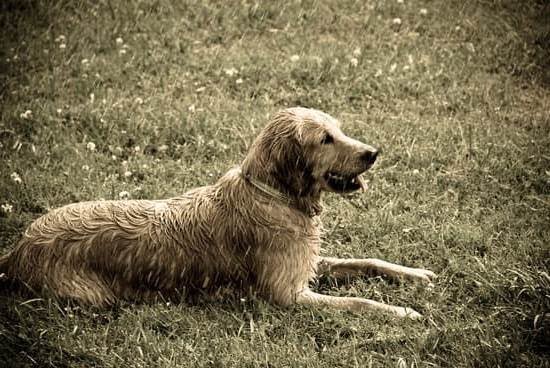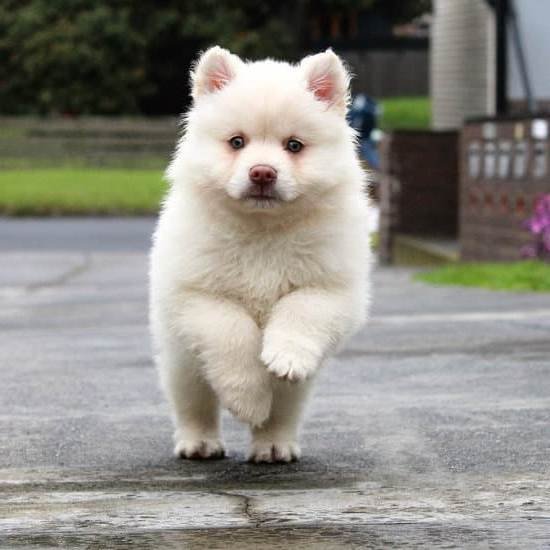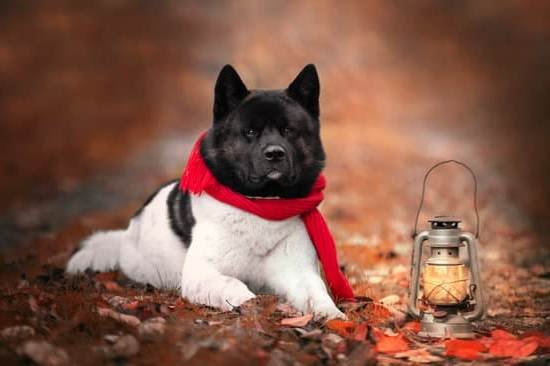Introduction
Dog Training Science Fair Projects are a great way for people of all ages to get involved in the scientific process. These projects involve promoting good behavior and overall health to benefit both dogs and their owners. In this project, you can research and experiment with different training methods, or use existing methods and compare their success rates. With a little creativity, you can create an interesting project that involves learning about your own pet or working with shelter dogs in need of behavioral rehabilitation. Above all else, be sure that training is done safely, ethically, and humanely!
Selecting a Project
When selecting a dog training science fair project, there are several types available to consider. For example, one type of project is to study the effectiveness of positive reinforcement methods. This involves creating a hypothesis and researching which rewards are most effective in motivating and shaping dogs’ behavior. Research could explore different techniques that positive reinforcement methods can be used for such as sit, stay, come, or even more advanced tricks like play dead or spin around. Additionally, projects could compare the differences between traditional punishment techniques and reward-based ones.
Other types of projects involve examining how environmental factors may influence a dog’s responsiveness and training progress. This could include studying whether distractions such as noise levels or other animals affect their ability to follow commands or any change in response times when seen in different places or contexts. Furthermore, evaluating different breed characteristics when it comes to training would be an interesting comparison project focusing on traits such as obedience level or anxiety levels when commanded to perform certain tasks on specific timelines. Finally, investigating the impact of nutrition on a dog’s disposition can also provide insight into how good diet translates into success in acquired skills and consistency in performing them over time.
In addition to gaining research-based knowledge about canine behavior through a science experiment tailored around dog training, many benefits can arise from this type of project for both the pup and the student learner alike. Animals participating receive interactive stimulation that encourages learning through positive experiences for them; therefore providing enrichment beyond basic needs being met. Students grow intellectually by learning scientific methods of inquiry that sharpen powers of observation as well as analytical capabilities for recognizing patterns amidst trial data collections.
Brainstorming Ideas
When selecting a topic for your dog training science fair project, there are several things to consider. First, decide what kind of topic you want to explore. Are you interested in training methods, or do you want to research the psychology behind why dogs behave the way they do? Depending on the size of your project and the amount of time you have available, it might be beneficial to narrow down your topic even further. If you are researching how different types of rewards impact learning effectiveness, for example, you may want to focus on just one type of reward such as food vs. toys.
Once you have chosen a specific topic for your project, it is time to begin researching. Start by reading books and scientific papers about the theory behind the topic. Additionally, look for recent news articles that explain any advancements in understanding or issues related to the topic. Next, identify any studies or surveys done about this subject by consulting professional journals and databases like PsycINFO and PubMed Central.
If possible, talk with experts in this field who have experience working with animals and conducting research studies on animal behavior and training techniques — including veterinarians and animal behaviorists specializing in canine behavior. Ask them questions regarding their experiences working with dogs and different types of training techniques, as well as their opinions on potential outcomes based on your observations or planned study design. They can offer valuable insights that could help shape what data or information you end up collecting during your project. Finally, don’t forget to record all sources of information gathered so that you can properly cite them when writing up results!
Gather Materials
When it comes to putting together a successful dog training science fair project, having the right materials is essential. Depending on the particular project you decide to pursue, you may need items such as puzzle toys for dogs, clickers, treats, leashes and leads, bowls of water, invisible fences, cones and gates or target sticks. Make sure everything you need is gathered before you begin so that the process runs smoothy and there are no mishaps along the way. If possible you may also want to recruit another person to help control your subject dog during experiments so that all involved can remain safe.
Creating a Plan
Research: Before beginning your dog training science fair project, it is important to first conduct a thorough research to ensure success. Research should include topics such as general cultural ideas about canine behavior and learning, current trends in the field of dog training, and scientific studies on various methods of training. It is important to select a topic that will provide plenty of information for the experiment or project. You should also think about what specifically related to the topic you want to focus on for your project.
Materials: Depending on the specifics of the experiment or project, certain materials may need to be gathered before proceeding with the execution phase. For example, if you plan on creating a patterned behavior reinforcement program with food rewards, it would be essential to make sure you have appropriate food treats available at all times. Additionally, it is important always consider safety when selecting materials; any tools used in training should not risk harm or discomfort to the animal being trained.
Methods: Once you have completed your research and collected any necessary materials it is time to decide what methods will be used throughout the duration of the experiment or project. This could include implementing techniques such as positive reinforcement or clicker training, developing an effective reward system, experimenting with techniques such as shaping behaviors through successive approximations, or exploring boundary setting options with either physical guidance cues or verbal commands. The specific approach employed should depend mostly on the goals behind the particular experiment or project at hand.
Execution: After finalizing plans for designing and carrying out your dog training experiment or project clearly laid out guidelines for testing are important for referring back during implementation phases. An experimentation schedule that accurately identifies components such as variables involved, how each variable would be tested, observational period lengths and frequency/duration standards each session should follow may help maximize accuracy and efficacy results in your findings and conclusions at the end of testing period.
Express it Visually
Dog training science fair projects are a great way to educate students, parents, and dog owners on the best practices for raising a pup. Display boards are ideal for presenting facts, statistics, and details about puppy development, effective methods of instructing canines, and proper obedience training. Demonstrations of various dog commands such as sit, stay, come, and fetch can also be included in the display boards for visual effect. Additionally, educational facts about basic behaviors like potty training and how to keep puppies from becoming destructive can be highlighted as separate sections on the display board or within images of dogs being trained. Dogs are amazing creatures when properly trained and with a few simple displays and demonstrations at your science fair project booth you can be sure that everyone will gain an understanding of their potential.
Making it Fun
One of the main challenges in creating an engaging and successful dog training science fair project is finding ways to make it interesting and interactive for not only the audience but also for your dog. One creative way to bring your project to life is by incorporating elements of a game or performance in the presentation. This could be achieved by actively involving members of the audience to help with guidance and providing treats for each successful interaction. You could also consider designing a space that has adjustable obstacles and can be set up as if it were an obstacle course or a real-life trick demonstration, depending on how ambitious your project is. Another great way to enhance engagement would be to create visual aids such as videos which feature highlights from throughout your project. Video documentation of your progress over time will allow audience members to see how far you have come during the duration of your experiments with positive reinforcement techniques, helping them keep track of your achievements easily and efficiently. Most importantly, don’t forget to ensure that you are having fun while conducting your experiment since this enthusiasm will translate through all aspects of your science fair project – something that neither you nor the audience would want to miss out on!
Presentation
Presenting a dog training science fair project is the final and most important step of the process. After months of research and experimentation, it’s time to put your results on display! This can be an intimidating experience but with proper preparation and practice it can become a truly rewarding moment. Start by finding an appropriate venue for your presentation depending on how much space you need. If you created posters or props that demonstrate or illustrate your findings, make sure they’re easily accessible. Don’t forget to bring additional items such as handouts, questionnaires, and surveys so that visitors can learn more about what you accomplished both during your experiment and after its completion. Finally, practice presenting your project to friends or family so you feel comfortable expressing yourself in front of visitors at the event. With this extra effort, people who visit your booth will walk away knowing more about dog training science!
Reflection
Reflecting on the process of designing and carrying out dog training science fair projects can be incredibly rewarding. Taking time to reflect on the project will help to gain insight into what worked well and what could have been done differently. This reflection process involves reflecting on the design, implementation, and conclusion of the project. Questions to ask while reflecting include: What components of the project worked well? What did not work as expected? How could I improve the project for next time? Additionally, thinking about what was learned from this experience and how future projects can benefit from this information can provide valuable learning and insight. Lastly, taking the time to say thank you to everyone who contributed to the success of the project is an important part of reflecting on it as well.
Conclusion
The results from our dog training science fair projects demonstrates that with the right approach, a dog’s potential for learning and obedience can be unlocked. Training a dog can be extremely rewarding for both the owner and the animal, as it establishes better communication, increases trust and understanding between parties, and builds a strong bond. With patience and consistency in applying proper training techniques, dogs can be taught to respond to commands ranging from basic manners to complex tricks. Ultimately, this work is all about bringing out the best in our canine friends and developing meaningful relationships with them. Going forward, there are many opportunities to continue researching different ways that we can uncover more of our beloved pet’s hidden potential that lay dormant in their intelligence.

Welcome to the blog! I am a professional dog trainer and have been working with dogs for many years. In this blog, I will be discussing various topics related to dog training, including tips, tricks, and advice. I hope you find this information helpful and informative. Thanks for reading!





